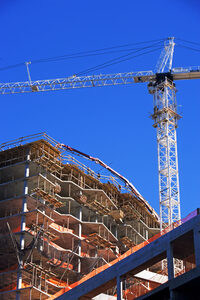
It is a marvel when you get to see tall skyscrapers which are the end products of months or years construction work. The final building looks amazing especially the outer glass panels that reflect the blue sky. Furthermore, occupants get to have the best view of the city’s skyline every single day. Just imagine watching the sunrise and the sunset at the top-most floors.
In order to achieve such a marvel, a construction site needs to be set up and employees need to be hired before work begins. What many people don’t know is that a construction site is one of the most dangerous workplaces in the world.
When you take into account the height, the edges, the deep holes, the scaffolds, the equipment and the wobbly stairs, then you know what danger a construction site poses to the employees and others who have access to it. So, what can be done?
As a project manager, it is important to enact health and safety measures at the construction site before any work begins. Here are health and safety measures to put in place at a construction site to ensure the safety of construction workers.
Fall protection
Construction workers get to encounter astonishing heights which are not for the faint hearted especially as the building continues to be built. It is common to see construction workers sitting on a steel support over a hundred feet from the ground. When you consider the danger, then you understand why fall protection is a safety measure in a construction site.
Statistics have revealed that falls account for the highest number of fatalities and major injuries in workplaces. A number of factors promote this and they include unstable working surfaces, misuse and human error. To prevent falls, a construction site should have guardrails, fall arrest systems, safety nets, covers and restraint systems. Aerial lifts and elevated platforms can also be used to access floors located high up.
Eye, face and foot protection
The face and the eyes are in danger of damage and injuries especially when an object hits or gets into the eye. It is important to ensure eye and face protection. A few measures to take include putting on safety glasses or face shields especially when welding, drilling, cutting and nailing.
The feet need protection too and one should wear work boots that are slip resistant and have puncture resistant soles. They should also have steel toe caps to prevent damage to the toes when objects are dropped.
Head, body and hand protection
To ensure that the head is well protected, a hard hat is required. This will protect the head from falling objects and bumps from fixed objects.
The hands need protection too and one should have gloves that fit snugly. They should have the right glove for the job for example heavy duty rubber gloves for concrete or welding gloves for welders.
The ears should not be forgotten. Noise levels, especially with all the equipment and tools running, can drive one crazy. It can also lead to conditions like tinnitus which you don’t want. Industrial earplugs and earmuffs can protect the sensitive inner ear. Invest in industrial ear plugs today!
First aid kit
A suitable first aid kit is a must in a construction site. Not only could it save a life but it will help to prevent further infection to the site of any injury.
The contents of the first aid kit should be based on a risk assessment of first aid needs at the construction site, a minimum stock of first-aid items might be:
- a leaflet giving general guidance on first aid (for example, the Health and Safety Executive’s leaflet, Basic advice on first aid at work);
- individually wrapped sterile plasters (assorted sizes), appropriate to the type of work (hypoallergenic plasters can be provided if necessary);
- sterile eye pads;
- individually wrapped triangular bandages, preferably sterile;
- safety pins;
- large sterile individually wrapped unmedicated wound dressings;
- medium-sized sterile individually wrapped unmedicated wound dressings;
- disposable gloves
In case of an accident at the construction site, individuals can use the kit to patch up the injured person whilst waiting for the emergency services to arrive, or before seeking treatment from a GP or hospital.
Crane, forklift and truck use
Serious injuries may occur when cranes, trucks and forklifts are not handled or inspected properly. Injuries may occur when one is struck by an overhead load or when getting on and off the equipment. In order to ensure safety on a crane, inspect all controls before use, know the weight of the load to be lifted, never move the load over workers and stay clear from power lines.
When it comes to forklifts and trucks, you need to inspect the equipment, ensure proper maintenance of equipment, ensure safe driving, avoid travelling with elevated loads and prohibit 'stunt driving' and horseplay.
Author bio:
This article was provided by SafetyMart, an industrial safety product store that has been in business since 1998.